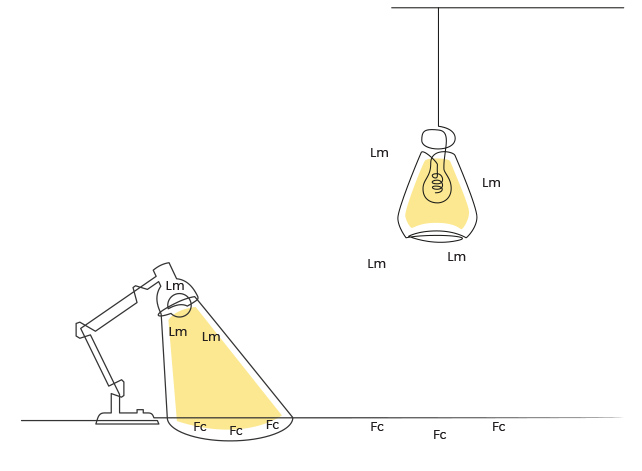The humble lumen is one of the most commonly referenced specifications for comparing the output of light fixtures. However, it may not always be the most accurate measurement to consider. Read on to learn what we recommend using instead when evaluating your lighting options.
Simply put, a lumen (Lm) measures the amount of illumination emitted from a light source in all directions. So the key phrase we want to highlight is the ‘all directions’ bit because that also includes the rays directed upwards into the fixture and through any shades or lenses present. Wouldn’t you rather know how much illumination reaches your desktop and not the inside of the shade?
Lumens also fail to account for the physical location and positioning of the light fixture itself, which would impact the amount of brightness present on a work surface. Considering these factors, it quickly becomes apparent that measuring a lamp’s lumen output alone doesn’t tell the whole story.
When evaluating whether a light fixture has enough brilliance for your needs, we recommend using foot candles instead. This term was coined in the 19th century to define illumination intensity using candle power at a distance of one foot. Today, a foot-candle (Fc) describes the amount of light that falls on a surface and is equal to one lumen per square foot. Understanding foot candles is much more relevant for determining how well a task light performs its job of getting productivity-enhancing illumination to your desktop.

For example, a pendant light with an Edison-style bulb dispersing 900 lumens of light will ultimately provide fewer foot candles to a surface than a 400-lumen LED task light designed to provide focused light in a single direction. Why? Because the 900 lumens from the pendant lamp are dispersing in all directions, far above the surface in question. In comparison, all 400 lumens from the task light are positioned about 15″ off the surface, providing better efficiency at half the lumens.
How many foot-candles do I need?
Now that we know that foot candles are the best measurement to use, the question becomes—how many do I need? The answer varies according to a person’s age and what kind of work they’re doing because different tasks require varying amounts of light. We’ll dive into those details in a future article.
In the market for a task light?
Don’t be easily impressed by high-lumen outputs when shopping for lighting. Instead, evaluate your options by reviewing specifications in both foot candles and lumens to shed light on the whole picture.
Ready to shop? Find task lights to meet every need at LightCorp.com.

